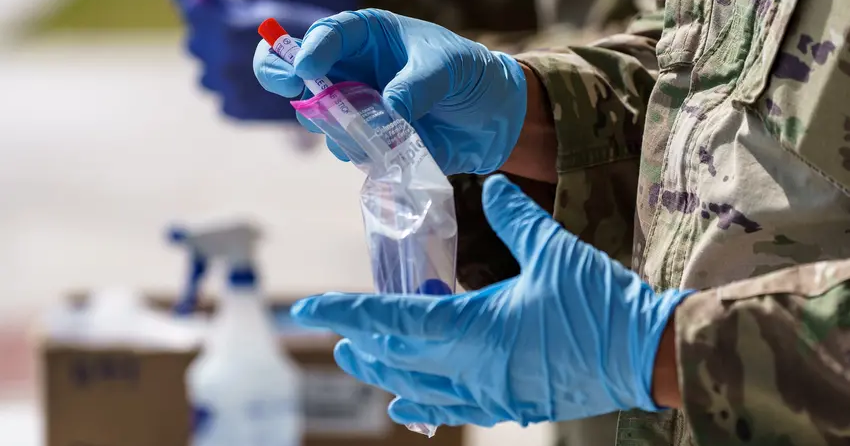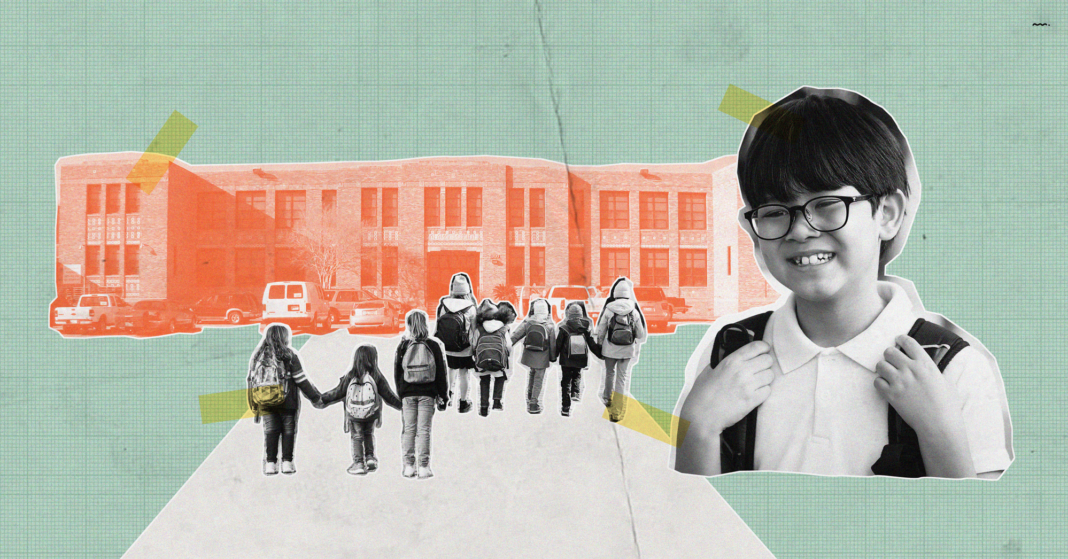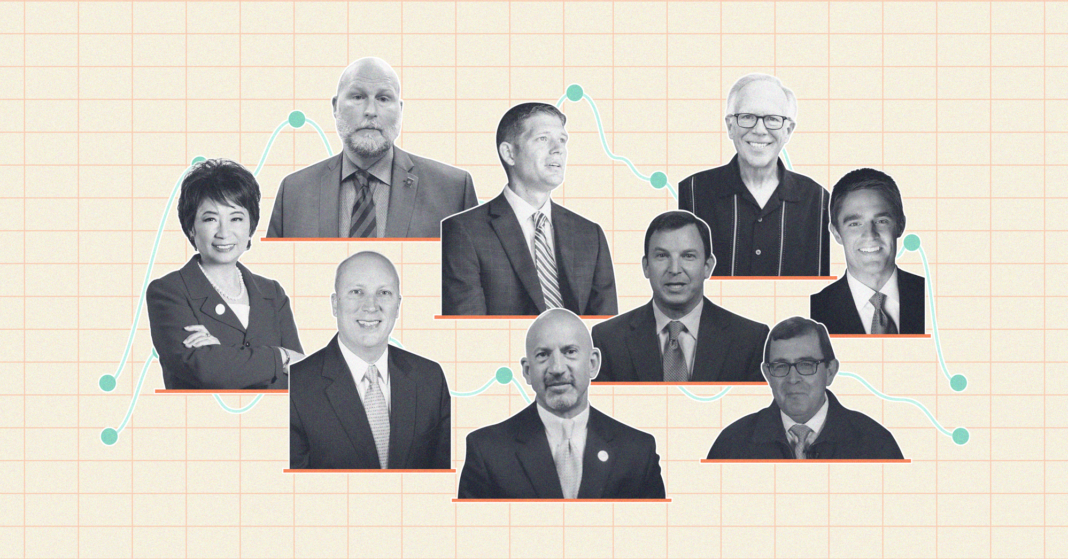As Texas’ coronavirus cases and hospitalizations continue to break records for a second straight week, leaders and health experts in the largest cities are warning that the state is heading down a dangerous path and hospitals could soon be overwhelmed.
Gov. Greg Abbott struck a more urgent tone Monday, calling the increases in hospitalizations and cases across the state unacceptable. He said the state would only shut down businesses again as a last resort but cautioned that if trends don’t reverse in the coming weeks, he’d be forced to take action.
“To state the obvious, COVID-19 is now spreading at an unacceptable rate in Texas, and it must be corralled,” Abbott said during a news conference at the Texas Capitol in Austin.
Travis County and Austin-area cases dramatically increased over the weekend, surging to 6,210 on Monday, compared with about 4,991 reported Friday.
In an open letter published Sunday, Austin Mayor Steve Adler called on residents to take the threat of the coronavirus seriously. He said the risk of catching the virus is three times higher than it was two weeks ago.
“The virus is here. Infections are rising. If we want the economy to reopen fully and stay open, we have to take this seriously,” he wrote.
If cases continue to increase at this pace, Adler said officials will soon have to “choose between returning to sheltering at home or watching as our hospitals get overwhelmed and we suffer many preventable deaths.”
“We could act now to try to change that trajectory,” he said. “Wear masks, socials distance, don’t be around people if you even think you might have the virus. We’ve got to do this, we’ve got to do this together, we’ve got to do this now.”
Meanwhile, Dr. Peter Hotez, dean of the National School of Tropical Medicine at Baylor College of Medicine, predicted over the weekend that Houston is on the brink of a disaster, based on the latest trends in increasing numbers.
“My observations if this trajectory persists: 1) Houston would become the worst affected city in the US, maybe rival what we’re seeing now in Brazil 2) The masks = good 1st step but simply won’t be enough 3) We would need to proceed to red alert,” Hotez tweeted.
Houston Mayor Sylvester Turner echoed the concern in a Monday press conference.
“Today we have another grim reminder that the virus is very much alive in our community,” Turner said. “We’re moving very fast in the wrong direction.”
Houston reported 1,789 new cases of COVID-19 and five new related deaths Monday, which includes numbers from Sunday, Turner said. There are 14,322 total cases in the city.
There is about a 5.2% increase in the number of occupied hospital beds, and 13% of all beds are occupied by COVID-19 patients, including 24% of beds in intensive care units, said Dr. David Persse, public health authority for the Houston Health Department.
“Probably the greater factor that’s pushing our numbers up is that the positivity rate is now gone from around 3% to around 9% — that’s a threefold increase,” Persse said.
Turner said Abbott reopened Texas businesses too soon.
“I would have stayed with the course that was working well for the city of Houston and other cities in the state of Texas,” he said.
“This is a health care crisis, and we’re all in it,” Turner said. “Nobody is trying to take away anybody’s rights and liberties. But we are simply trying to keep everyone well.”
Last week, with Abbott’s blessing, city mayors and county judges started requiring that business mandate face masks inside where social distancing is not possible. Abbott previously said that local leaders could not penalize individuals for refusing to wear masks, but last week he OK’d the business regulation.
Houston fire Chief Sam Peña said the virus has also had an effect on the city’s first responders. He said so far a total of 146 Houston police officers have tested positive for the virus, and while some have recovered, 103 are still in quarantine, unable to return to work. Another 88 firefighters are also quarantining after testing positive, and one is in the ICU, Peña said.
In North Texas, Dallas-Fort Worth hospitalizations due to COVID-19 have increased by 24% compared with the week before, according to data collected from UT Southwestern Medical Center on Friday. Because of the percentage of COVID-19 tests coming back positive, UT Southwestern’s model predicts that new cases and hospitalizations will increase by approximately 20% over the next two weeks, experts told reporters Monday morning.
“These numbers, as you can see, in the last two weeks are trending upwards alarmingly, and they’ve been the highest numbers that we’ve ever seen in the D-FW area,” said Dr. Mujeeb Basit, an assistant professor of internal medicine and cardiology at UT Southwestern.
“We’re still relatively low [percentage] in terms of hospital capacity, we’re the highest that we’ve ever been, but the percentage wise is all still relatively low. It’s around about 10 to 15%. But with the doubling rate, that’s only about three weeks of capacity if you really think about it,” he added.
Basit said there has been a sharp increase in the number of cases among younger people in North Texas.
“That’s translating into the younger people who are requiring hospitalization and younger people who are now requiring ICU [care],” he said.
In June, people under 50 have made up 50% of those hospitalized in D-FW hospitals and 30% of those in critical care, according to data gathered by UT Southwestern.
The medical center tracked a surge in hospitalizations two weeks after holiday weekends such as Easter and Memorial Day. Now researchers are concerned by a potential surge after July 4.
“Major holidays really affected the curve quite significantly,” Basit said. “But with July 4, that is really an unknown. You could have an increase in the reproduction number quite significantly if you have big gatherings.”
Cases are also rising fast in Hays County, south of Austin, particularly in San Marcos, home to Texas State University. Until June, the county typically fewer than 20 new cases each day.
That changed about a week after the Memorial Day weekend. On June 11, the county reported 82 new cases of the virus — “you read that right, 82,” local officials emphasized in an incredulous press release. Since then, the county has reported more than 100 cases on many days, including more than 200 on Thursday. Individuals in their 20s make up a huge share of those cases.
“We’re in a national hot spot, y’all. Be safe,” warned state Rep. Erin Zwiener, a Democrat who represents the area in the Texas House. She cautioned that case numbers in Hays County are growing faster than those in the rest of the Austin metropolitan area.
When Abbott let businesses start reopening, he pointed to two metrics as encouraging signs: the hospitalization rate, or proportion of infected Texans who are requiring hospitalization, and the infection rate, or the ratio of positive cases to tests conducted. At the time, he said his future decisions about business reopenings would be contingent on whether the infection rate — which public health experts want below 6% — “stays flat or decreases.”
The seven-day positivity rate has surpassed 6% every day since June 2, reaching 8.8% on Sunday.
That is up since May, when the average positivity rate dipped to 4.3%, but down significantly from April, when it spiked to 13.9%. The number of people hospitalized with the coronavirus has also steadily increased since late May.
It’s reached record high levels for 13 of the last 14 days, with 3,711 patients hospitalized with the virus as of Monday. The number is likely an undercount as the state only tallies lab-confirmed COVID-19 cases.
Abbott has said the the state has “abundant hospital capacity” and that officials “remain laser focused” on maintaining it.
This story originally appeared on the Texas Tribune. To read this article in its original format, click here.








